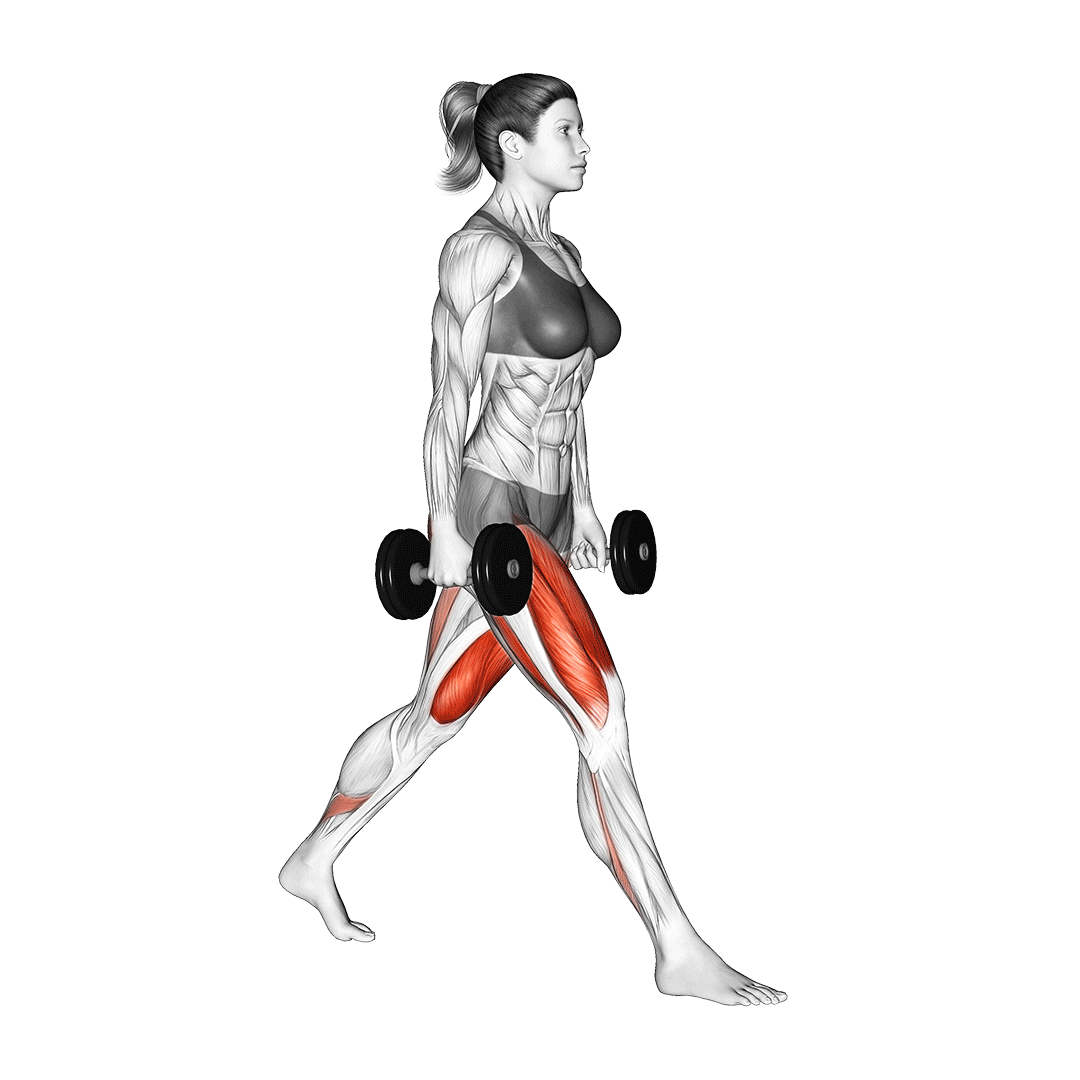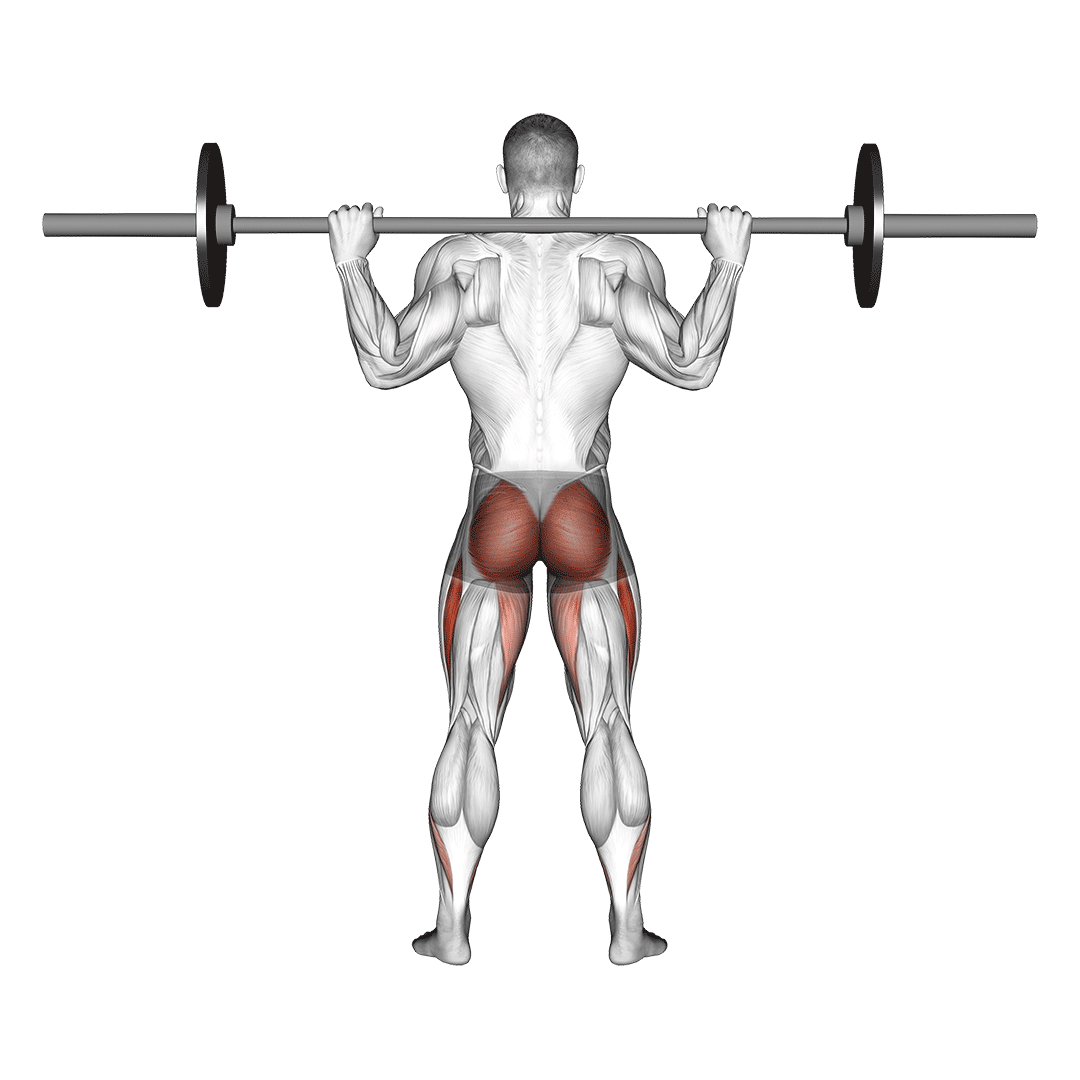What are the Benefits of Doing Dumbbell Split Squats?
Dumbbell split squats are considered to be a novice-level exercise, considering their relatively low loading capacity and simple movement pattern.
The primary benefits of dumbbell split squats are:
- Excellent for Building Lower Body Mass and Strength
- Reinforces Knee and Hip Biomechanical Activity
- Low-Risk, Simple and Highly Accessible
- High Carryover to Athletic Activities
- Comparatively Easier on the Back and Spine
Benefits of Dumbbell Split Squats
Excellent for Building Lower Body Mass and Strength
The main purpose behind performing dumbbell split squats is its capacity to develop both mass and strength in the largest muscles of the lower body.
Although primarily a quadriceps-dominant movement, the glutes and hamstrings are also targeted to a significant range with each repetition of the dumbbell split squat.

With proper form and sufficient frequency, these muscle groups will undoubtedly hypertrophy and otherwise respond far better to neurologically driven contraction - leading to strength development as well.
Of course, to get the most out of dumbbell split squats in this regard, the lifter must be in a caloric surplus and also perform similar lower body compound movements to offset the disadvantages inherent to split squats.
Reinforces Knee and Hip Biomechanical Activity
Dumbbell split squats are excellent for reinforcing the biomechanics behind knee flexion/extension and hip flexion, as these three actions are used to their fullest capacity throughout the exercise.

Such reinforcement is achieved in two ways.
First, the pressure and tension placed on these joints results in the body remodeling the tissues they consist of, especially in regards to soft tissue like tendons or skeletal musculature.
Second is the actual strengthening of the muscles responsible for these actions - creating a more stable movement pattern and allowing for the movement to be performed with greater force.
Over time, regular performers of the dumbbell split squat will find that general motion of their lower body’s joints is far easier, even under load.
Low-Risk, Simple and Highly Accessible
In comparison to more equipment-intensive exercises like the leg press or more complex ones like the deadlift, the dumbbell split squat is considerably more convenient and accessible to the average gym goer.
Not only does performing the exercise require only a pair of dumbbells, but the margin of error for proper technique is somewhat more forgiving - allowing novices to make more mistakes without significantly increasing their risk of injury.
Of course, proper form should still be mastered as soon as possible. However, unlike the back squat or deadlift where acute injury can occur quite quickly without correct technique, the split squat is far less likely to do so.
High Carryover to Athletic Activities
As a staggered exercise with a true-to-life movement pattern, the dumbbell split squat features significant carryover to practically any athletic activity - but especially so sports like sprinting or baseball, where a similar stance is often used.
Apart from allowing the lifter to demand more force from their lower body musculature, including the dumbbell split squat into an athletic training routine also allows lifters to hone their sense of balance and coordination while in an uneven stance.
For even greater applicability to athletic activities, try including the dumbbell split squat into circuit training, preferably one that targets the full body using both aerobic and anaerobic exertion.
Comparatively Easier on the Back and Spine
Many lifters who wish to reduce pressure on their spine will avoid vertically loaded exercises like the back squat or smith machine squat.

Instead, movements that both limit total load and distribute the pressure more evenly are utilized as substitutes - with the dumbbell split squat being a perfect example of such exercises.
Remember to first speak to a medical professional if you have been diagnosed with spine or back injuries. Lower back flexion is still present, even in the split squat, and can potentially lead to a worsening of said injury.
References
1. Graham, John F MS, CSCS*D, FNSCA. Exercise Technique: Dumbbell Squat, Dumbbell Split Squat, and Barbell Box Step-up. Strength and Conditioning Journal 33(5):p 76-78, October 2011. | DOI: 10.1519/SSC.0b013e3181ebcf12
2. Kipp, Kristof; Kim, Hoon; Wolf, William I.. Muscle Forces During the Squat, Split Squat, and Step-Up Across a Range of External Loads in College-Aged Men. Journal of Strength and Conditioning Research 36(2):p 314-323, February 2022. | DOI: 10.1519/JSC.0000000000003688
